
How to Use 12V Solenoid Valve: Examples, Pinouts, and Specs
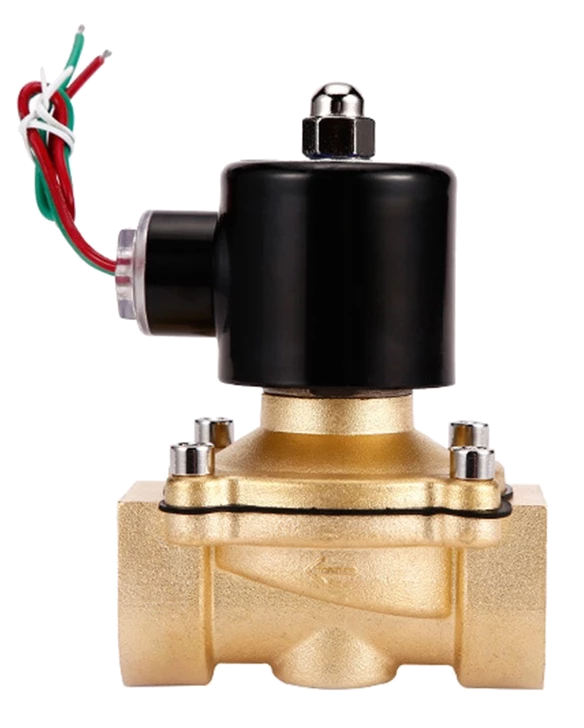
 Design with 12V Solenoid Valve in Cirkit Designer
Design with 12V Solenoid Valve in Cirkit Designer12V Solenoid Valve Documentation
1. Introduction
The 12V Solenoid Valve is an electromechanical device designed to control the flow of fluids or gases. It operates by using an electromagnetic coil to open or close a valve, allowing or restricting the passage of the medium. This component is widely used in automation systems, irrigation setups, fluid control systems, and pneumatic or hydraulic applications.
Common Applications:
- Irrigation Systems: Automated watering systems for gardens and farms.
- Industrial Automation: Controlling the flow of liquids or gases in manufacturing processes.
- Home Appliances: Dishwashers, washing machines, and water purifiers.
- HVAC Systems: Regulating air or fluid flow in heating, ventilation, and air conditioning systems.
- DIY Projects: Arduino-based automation projects, such as smart watering systems.
2. Technical Specifications
The following table outlines the key technical details of the 12V Solenoid Valve:
| Parameter | Specification |
|---|---|
| Operating Voltage | 12V DC |
| Current Consumption | 0.2A to 0.5A (depending on the model and load) |
| Power Rating | 2.4W to 6W |
| Operating Pressure | 0.02 MPa to 0.8 MPa |
| Fluid Type | Water, air, or other non-corrosive fluids |
| Valve Type | Normally Closed (NC) |
| Material | Brass, plastic, or stainless steel (varies by model) |
| Port Size | 1/2 inch (common), other sizes available |
| Response Time | < 50 ms |
| Operating Temperature | 0°C to 60°C |
| Lifespan | 100,000+ cycles |
Pin Configuration and Descriptions
The 12V Solenoid Valve typically has two wires for connection:
| Wire | Description |
|---|---|
| Red | Positive terminal (+12V DC input) |
| Black | Negative terminal (Ground) |
3. Usage Instructions
How to Use the 12V Solenoid Valve in a Circuit
Power Supply:
- Connect the red wire of the solenoid valve to the positive terminal of a 12V DC power source.
- Connect the black wire to the ground terminal of the power source.
Control Mechanism:
- Use a relay module or a transistor to control the solenoid valve with a microcontroller (e.g., Arduino).
- Ensure the power supply can provide sufficient current (at least 0.5A) to operate the valve.
Circuit Example:
- When the solenoid valve is powered, the electromagnetic coil activates, opening the valve to allow fluid or gas to flow.
- When power is removed, the valve returns to its normally closed (NC) state, stopping the flow.
Important Considerations and Best Practices
- Power Supply: Always use a stable 12V DC power source with sufficient current capacity.
- Back-EMF Protection: Use a flyback diode across the solenoid terminals to protect the circuit from voltage spikes caused by the coil's inductance.
- Fluid Compatibility: Ensure the fluid or gas is compatible with the valve's material to prevent corrosion or damage.
- Pressure Limits: Do not exceed the valve's maximum operating pressure to avoid leaks or failure.
- Orientation: Install the valve in the correct orientation as specified by the manufacturer (e.g., horizontal or vertical).
4. Example Circuit with Arduino UNO
Below is an example of how to control a 12V Solenoid Valve using an Arduino UNO and a relay module.
Components Required:
- 12V Solenoid Valve
- Arduino UNO
- 1-Channel Relay Module
- 12V DC Power Supply
- Flyback Diode (e.g., 1N4007)
- Connecting Wires
Circuit Diagram:
[Arduino UNO] --- [Relay Module] --- [12V Solenoid Valve]
Arduino Code:
// Define the relay pin connected to the Arduino
const int relayPin = 7; // Connect the relay module's IN pin to Arduino pin 7
void setup() {
pinMode(relayPin, OUTPUT); // Set the relay pin as an output
digitalWrite(relayPin, LOW); // Ensure the relay is off at startup
}
void loop() {
// Turn the solenoid valve ON
digitalWrite(relayPin, HIGH); // Activate the relay
delay(5000); // Keep the valve open for 5 seconds
// Turn the solenoid valve OFF
digitalWrite(relayPin, LOW); // Deactivate the relay
delay(5000); // Keep the valve closed for 5 seconds
}
Notes:
- The relay module acts as a switch to control the 12V solenoid valve.
- A flyback diode should be connected across the solenoid valve terminals to protect the relay from voltage spikes.
5. Troubleshooting and FAQs
Common Issues and Solutions
| Issue | Possible Cause | Solution |
|---|---|---|
| Solenoid valve does not activate | Insufficient power supply | Ensure the power supply provides 12V and at least 0.5A. |
| Valve remains open or closed | Faulty relay or wiring | Check the relay module and wiring connections. |
| Loud buzzing noise from the valve | Voltage fluctuations or loose connections | Use a stable power supply and secure all connections. |
| Fluid leaks from the valve | Exceeded pressure rating or damaged seal | Ensure the pressure is within the specified range. Replace the valve if damaged. |
| Arduino does not control the valve | Incorrect code or wiring | Verify the code and ensure proper connections between Arduino, relay, and valve. |
Frequently Asked Questions (FAQs)
Can I use the 12V Solenoid Valve with a 9V power supply?
- No, the valve requires a 12V DC power supply for proper operation. Using a lower voltage may result in unreliable performance.
Is the solenoid valve waterproof?
- The valve is designed for fluid control but may not be fully waterproof. Avoid submerging the valve unless specified by the manufacturer.
Can I control the valve directly with an Arduino?
- No, the Arduino cannot supply enough current to drive the solenoid valve directly. Use a relay module or a transistor as an intermediary.
What is the purpose of the flyback diode?
- The flyback diode protects the circuit from voltage spikes generated when the solenoid coil is de-energized.
Can I use the valve for hot water?
- Check the valve's operating temperature range. Some models are suitable for hot water, while others are not.
This documentation provides a comprehensive guide to understanding, using, and troubleshooting the 12V Solenoid Valve. Whether you're a beginner or an experienced user, this guide will help you integrate the valve into your projects effectively.
Explore Projects Built with 12V Solenoid Valve
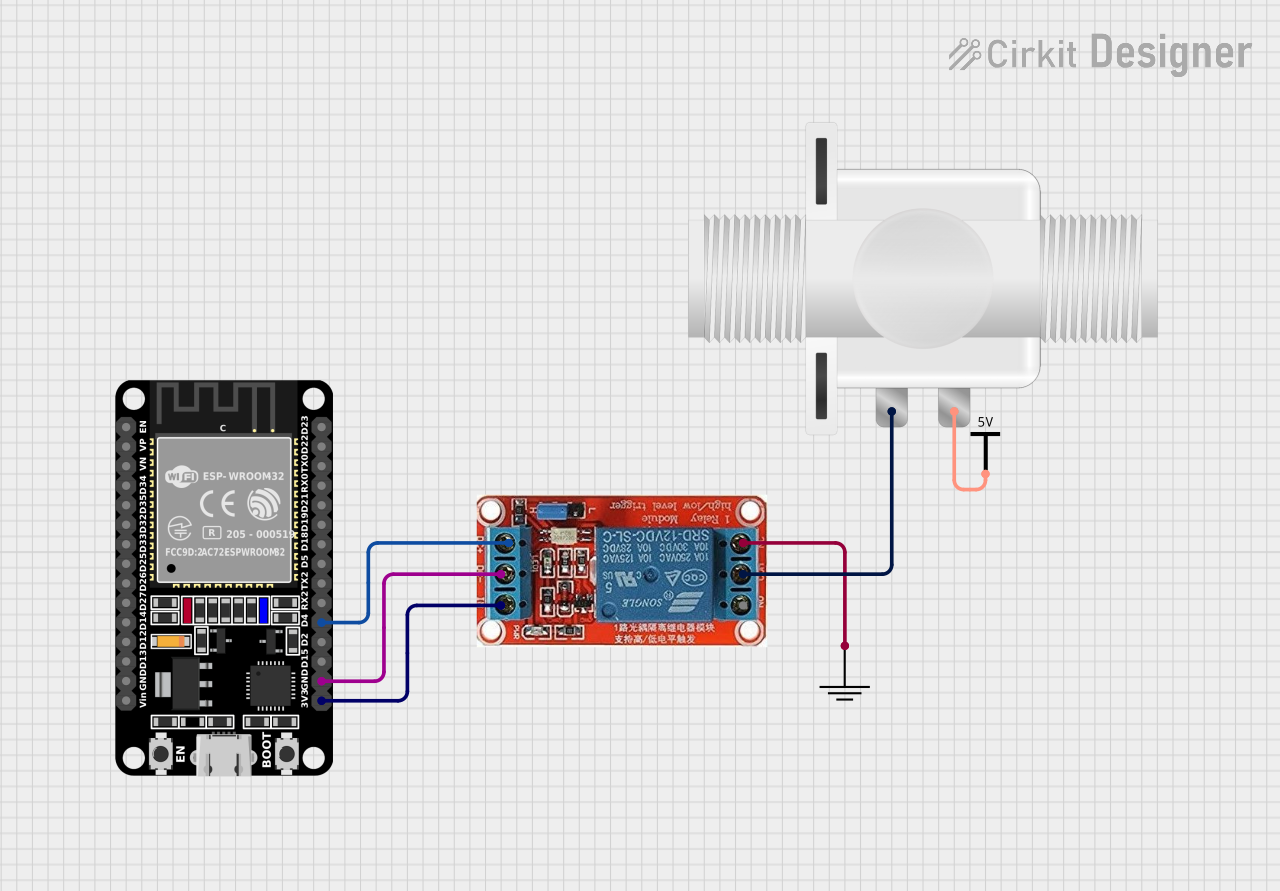
 Open Project in Cirkit Designer
Open Project in Cirkit Designer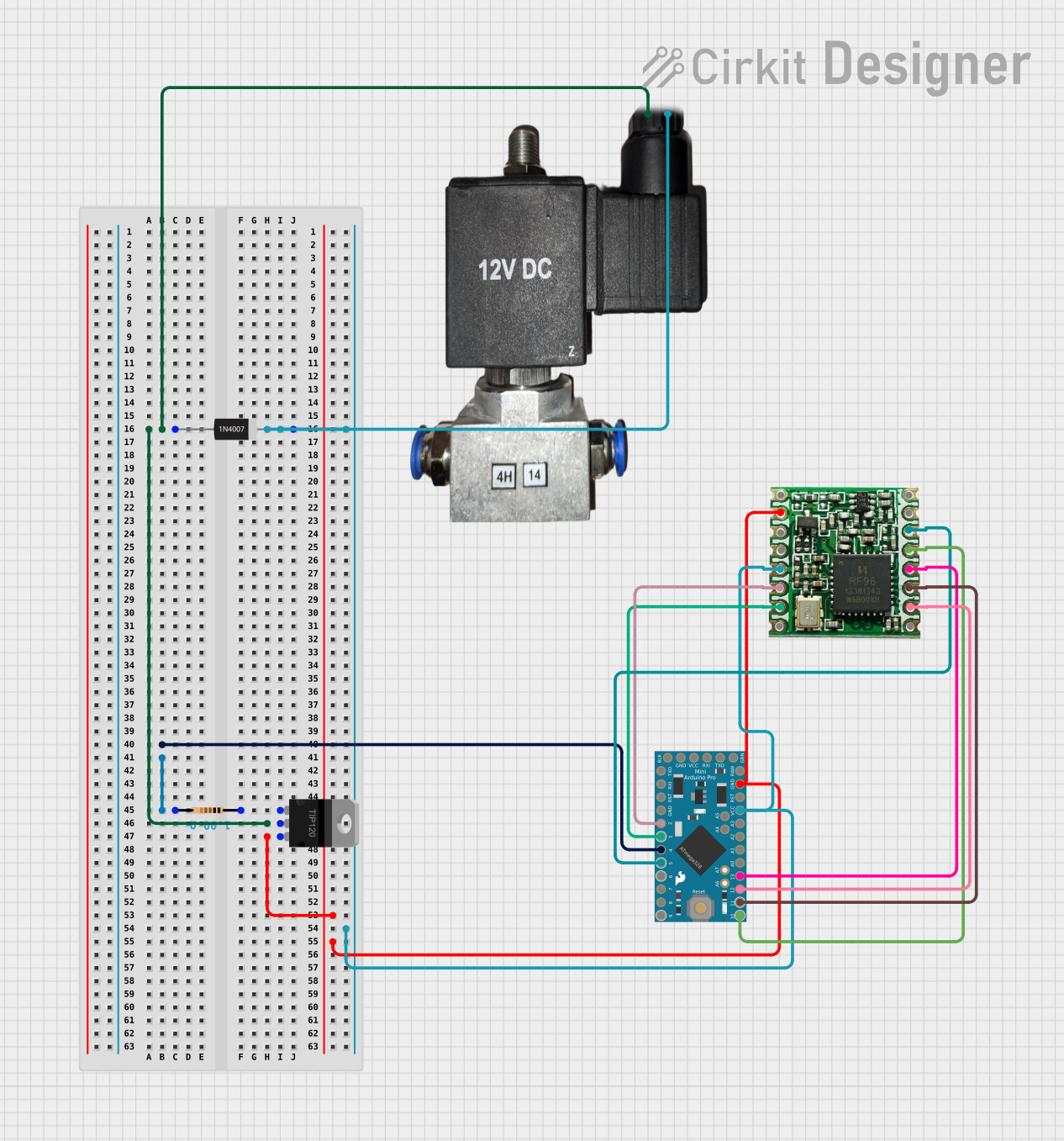
 Open Project in Cirkit Designer
Open Project in Cirkit Designer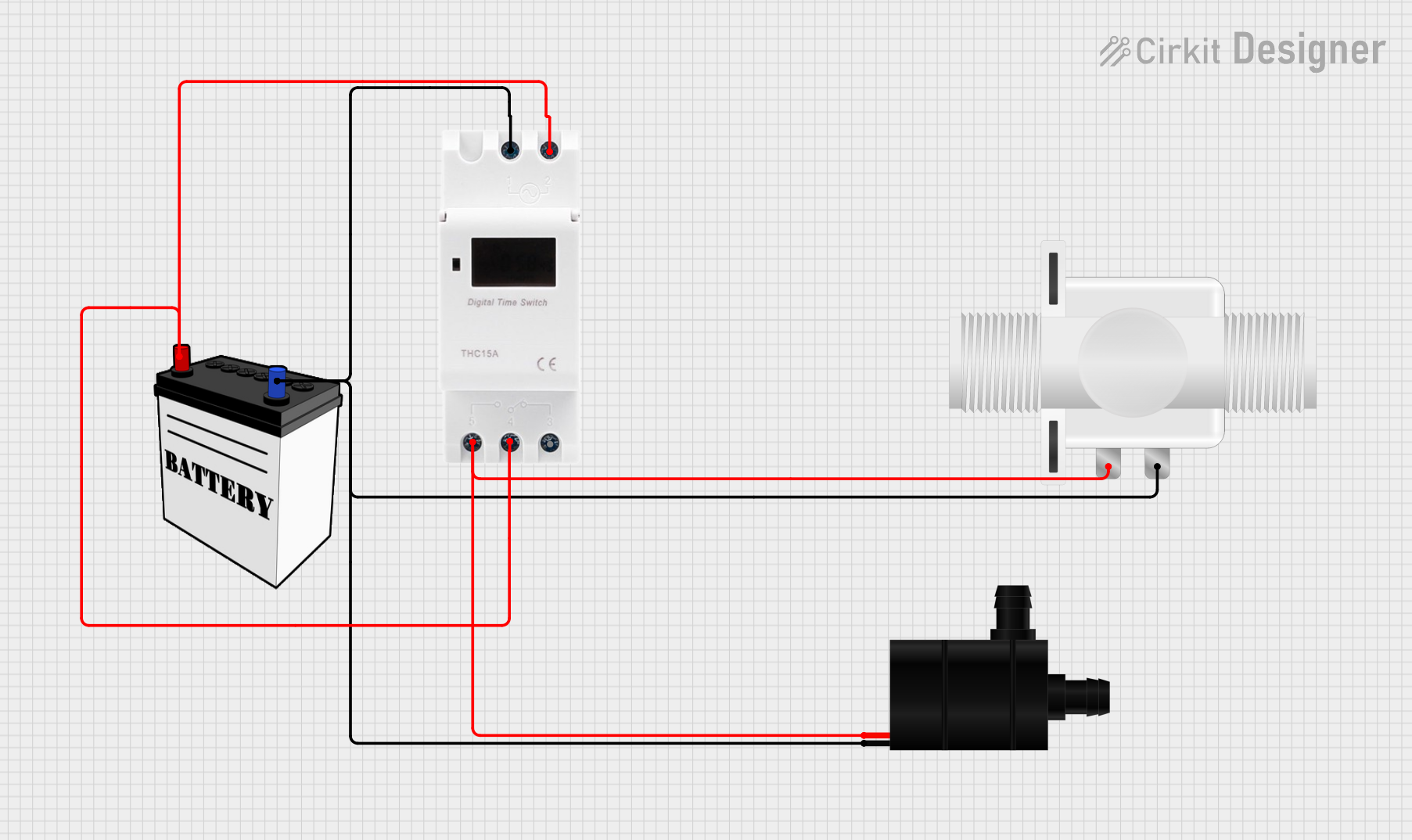
 Open Project in Cirkit Designer
Open Project in Cirkit Designer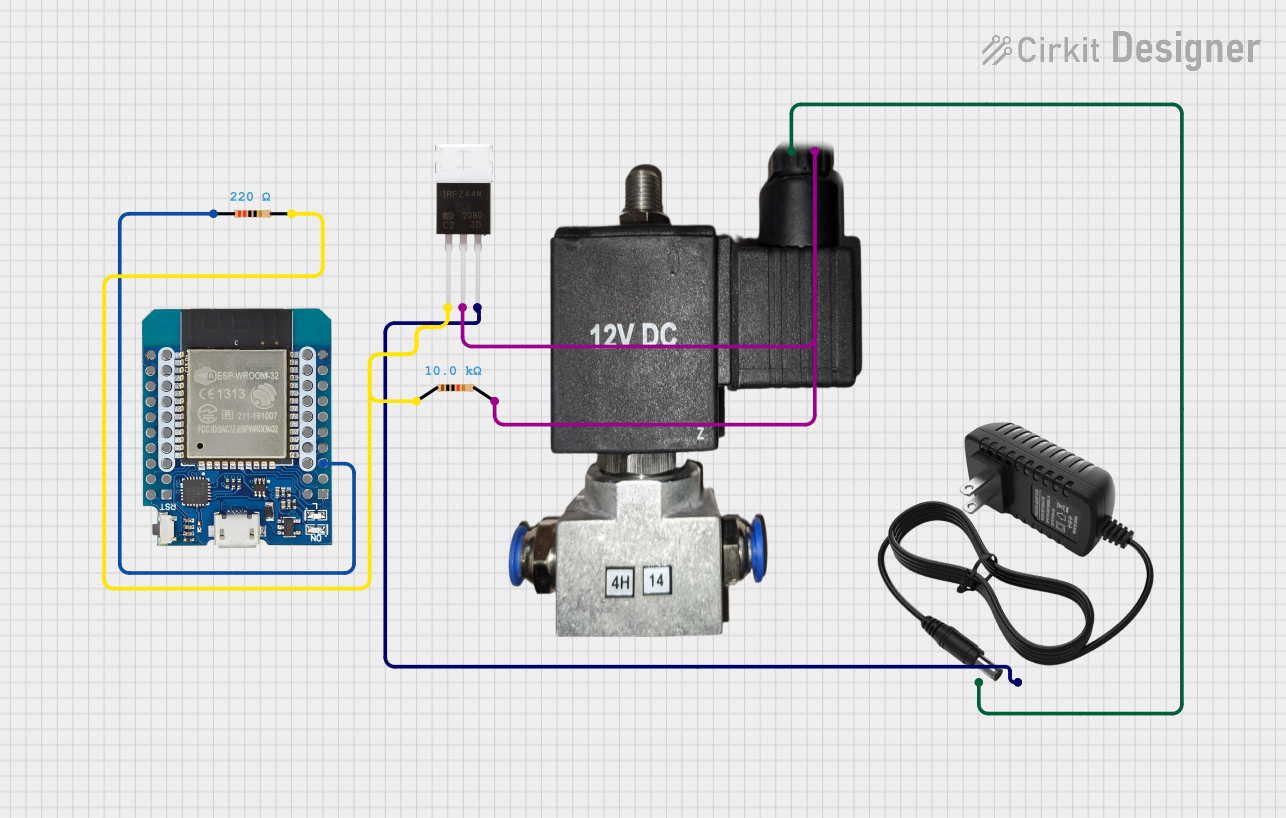
 Open Project in Cirkit Designer
Open Project in Cirkit DesignerExplore Projects Built with 12V Solenoid Valve

 Open Project in Cirkit Designer
Open Project in Cirkit Designer
 Open Project in Cirkit Designer
Open Project in Cirkit Designer
 Open Project in Cirkit Designer
Open Project in Cirkit Designer
 Open Project in Cirkit Designer
Open Project in Cirkit Designer